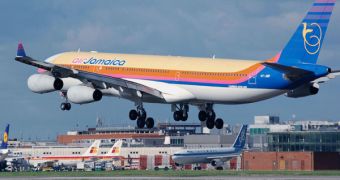Over the past year, four major airplane incidents, which could have ended in tragedy, were resolved exemplary by the crew on board. Fatalities were kept to zero, and every single passenger and crew member made it out of the plane alive. In the past, when an airplane fell from 20,000 feet with a hole in it the size of a small car, no one would have had any hopes of seeing their loved ones again. But, apparently, even that is possible, as is landing planes on rivers and getting the people out on the wings for safety.
Experts at Embry-Riddle Aeronautical University (ERAU) and MIT admit that the most credit on this survivability rate goes to luck and chance, but better planes and excellent-trained crews have also played a major role in averting disaster.
"What's amazing to me is the last few we've had, everybody's escaped. We've worked on survivability," ERAU retired safety professor Eric Doten, who is also a former Federal Aviation Administration senior official, says.
"It's much more heartening what happened today than unnerving, The emergencies are becoming rarer and rarer and the observed survival rate given the emergency" is constantly increasing, Arnold Barnett, a statistics professor at MIT, who also spends his time studying airline fatalities, adds. "And you have seen that bear itself out" in the latest emergency situations.
"People forget flight attendants are on board for one reason – that's to get people to safety as soon as possible. We kind of learned the hard way that it is critical to control what happen," ERAU crash worthiness professor Bill Waldock maintains. He adds that the entire infrastructure in planes has improved, starting with sturdier chairs and seat belts, and ending with improved resistance structures all around.
Waldock also expressed his admiration for the water landing in New York City, saying that the pilot of the US Airways Airbus 320 jetliner has to be congratulated for managing to perform such a difficult operation. As opposed to landing on the open ocean or on airports, river landings are very dangerous, and, at any moment, anything can go wrong.
Luck played an important role in this landing as well, but training on the part of the crew and the pilot saved the day, and got all people aboard rescued without a single casualty. "It has to be one of the most extraordinary water landings in aviation history," Barnett concludes.

 14 DAY TRIAL //
14 DAY TRIAL //